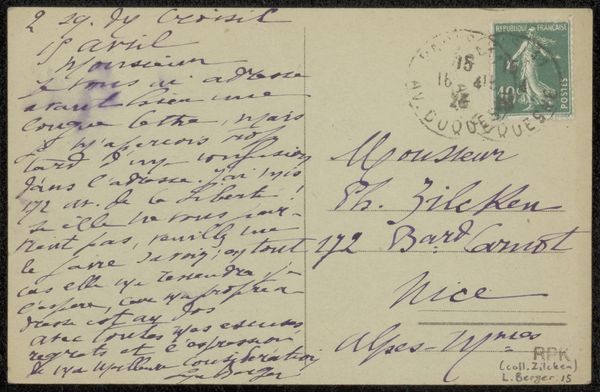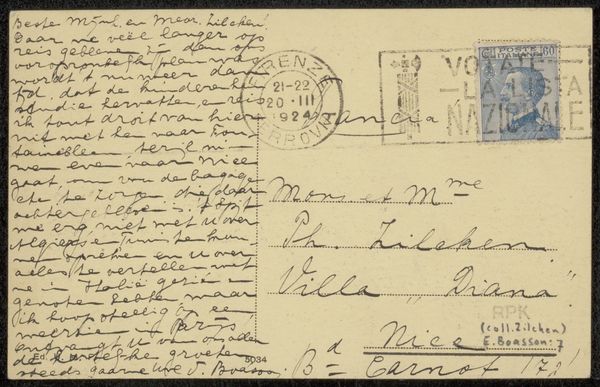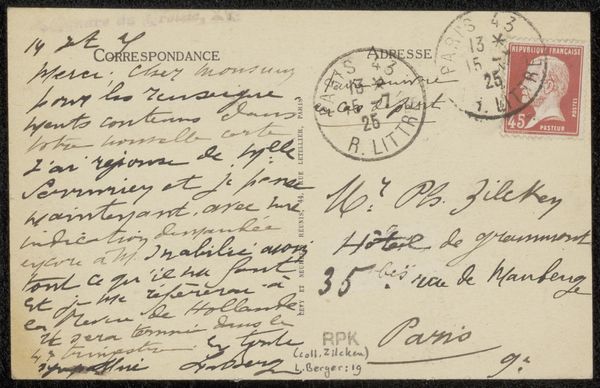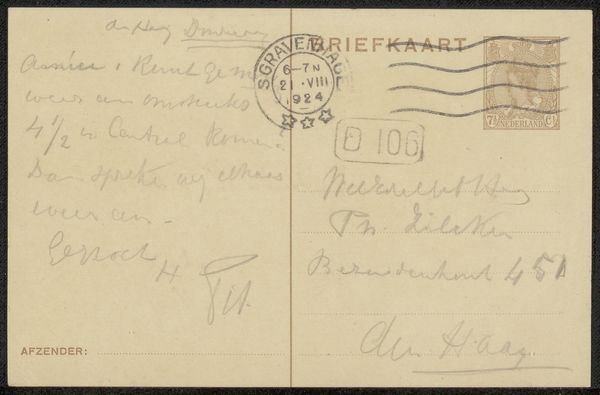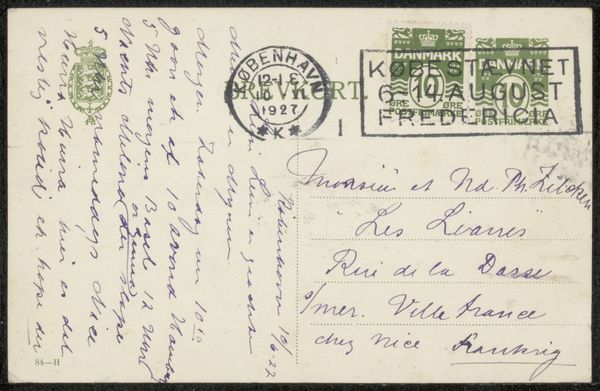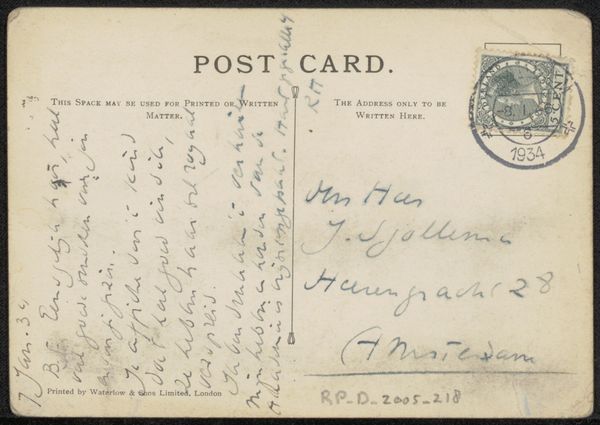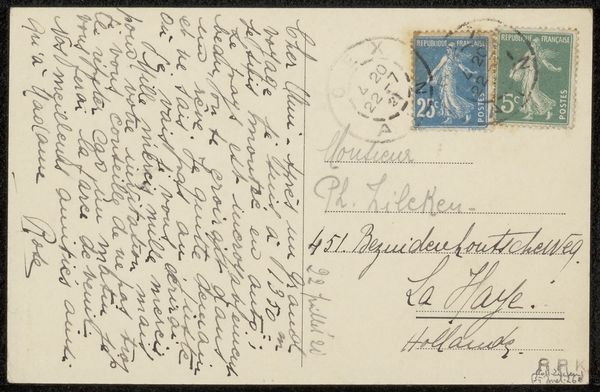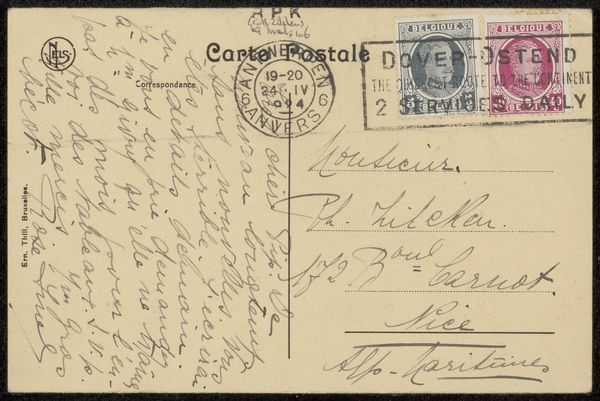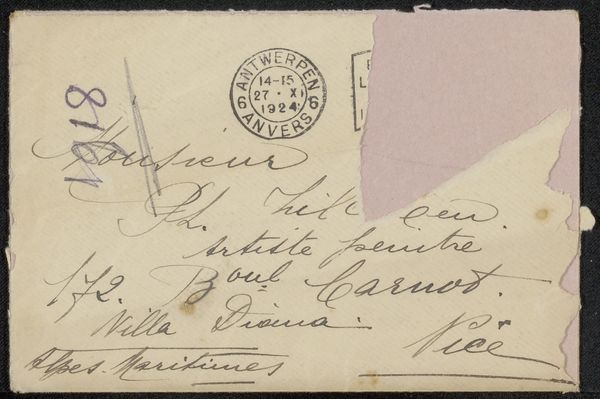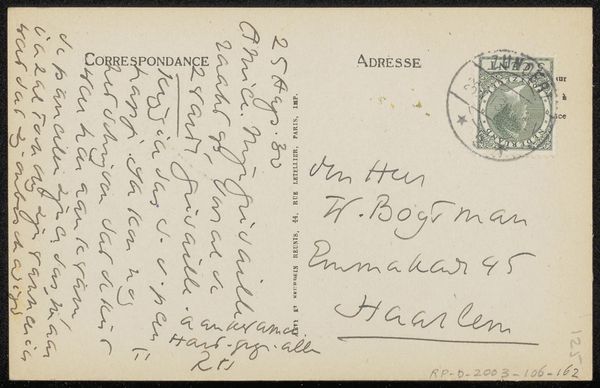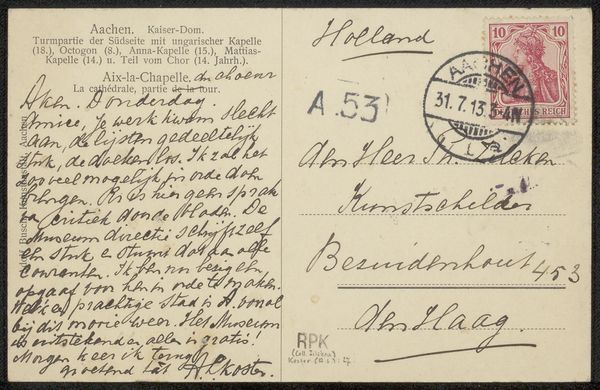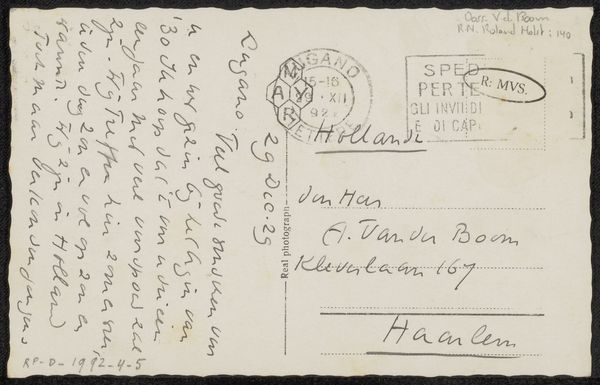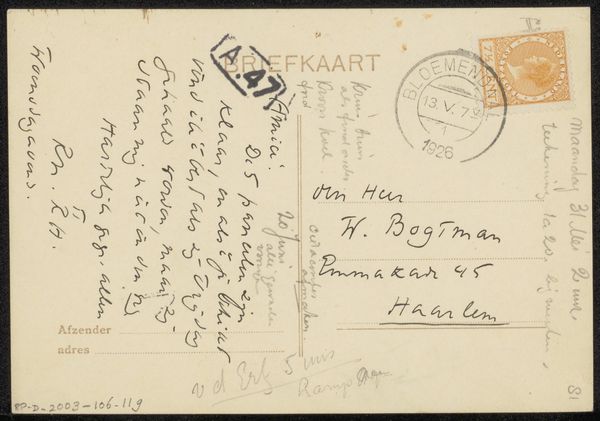
drawing, ink, pen
#
drawing
#
comic strip sketch
#
pen sketch
#
personal sketchbook
#
ink
#
sketchwork
#
ink drawing experimentation
#
pen-ink sketch
#
pen work
#
sketchbook drawing
#
pen
#
storyboard and sketchbook work
#
sketchbook art
Copyright: Rijks Museum: Open Domain
Curator: Here we have “Prentbriefkaart aan Philip Zilcken,” a postcard dating from before 1929. It’s an ink and pen drawing. What are your initial thoughts? Editor: The first thing that strikes me is the density of the writing; it feels like an intimate personal correspondence. There is a very appealing tactile quality implied, too, due to the physical traces of pen on paper. Curator: Indeed, the postcard format itself speaks to a particular moment in social history. Before the ease of electronic communication, sending postcards like this was a common way to maintain connections. Editor: Thinking about the composition, there's a clear division between the right and left sides, one bearing a formal address, stamp, and postal markings, the other densely packed with cursive text that defies easy decipherment to my eye. Curator: The postal markings, “Orne, France” along with “Paris,” reveal something about the journey it took. Postcards facilitated both tourism and business communication during a pivotal shift to globalization, shaping modern society’s concept of distances and information transfer. Editor: Precisely! I am thinking of how postcards like this serve as miniature documents of their time. The very materiality--the ink, the weight of the card stock itself—tells a tale about its conditions of creation. Curator: You have mentioned its formal nature and it begs the question, what narratives are hidden within these penned words? Editor: That's a fascinating point; one is tempted to engage in linguistic archeology to decipher that historical context. It presents itself as an immediate, accessible format and contrasts with the secrets veiled behind handwriting and now anachronistic colloquialisms. Curator: Analyzing that dense script and postmark gives us insight into communication networks in a time without immediate digital access. Considering what we've observed, both of us now find new interest in similar everyday objects as precious documents, don’t you think? Editor: Yes. Looking at something that would otherwise be dismissed, you’re making me see deeper by highlighting a fascinating blend of visual and textual information.
Comments
No comments
Be the first to comment and join the conversation on the ultimate creative platform.
